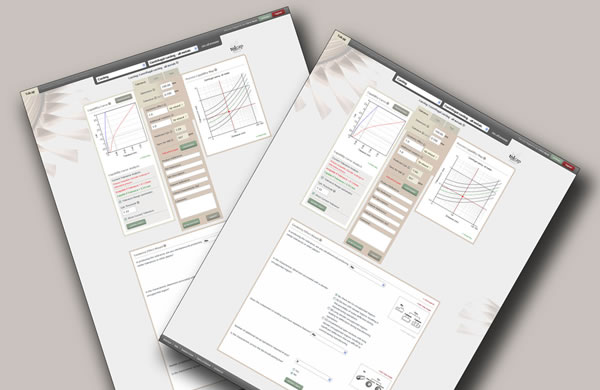Design and manufacturing departments co-exist in relative harmony in modern manufacturing. Gone are the days when engineering
created the design and manufacturing produced it and never the twain should meet. However, issues that do still divide the
two include engineering change, scrap and re-work. We would argue that more attention paid to tolerances in the first instance
would help businesses get it right first time more often.
In today's manufacturing environment the design engineering department is often on a different site from the production plant.
In fact, it's frequently in a different country! As a result, it's sometimes more difficult to integrate design and manufacturing,
because of the geographical space between the two. This lack of integration can result in wastage that could have been avoided
if the design team had greater insight into manufacturing in the first instance.
figure 1.

One of the ways in which engineering change, rework and scrap can be reduced is to provide the designer with the expertise of a manufacturing professional. This isn't easy of course; the era of design engineers being master workmen who have moved department has passed. Instead, design engineers are more likely to be specialists who have joined a design team directly from University. This means that designers rarely have all the necessary experience of manufacturing materials, processes and treatments.
In contrast, manufacturing engineers, while not necessarily having extensive engineering design knowledge and skills, are
likely to be specialists in lean, manufacturing engineering systems and process improvement.
It's clear then that what is required is a way of combining the knowledge of both parties. Traditionally this is where management
becomes involved. Everything meets at board level, or with the managing director, but on the way up there could be several
levels of management to filter through before the required information can be pooled. Again, location and mindset is often
a huge issue in this context.
Now, clearly this is a big problem, which in order to be genuinely addressed would require a holistic root and branch review
of the way the business in question works. However, with regard specifically to reducing wastage, there is a way of providing
design engineers the distilled expertise of a manufacturing specialist.
One of the key ways to reduce change, rework and scrap is the allocation of capable tolerances during the design process.
By accurately defining the allowable variation of a component, a design engineer can hugely reduce the rate of scrap, wastage
and rework. Traditionally this is done using the designer's experience with reference to previous designs and, very occasionally,
some kind of tolerancing software.
figure 2.

For example tolerance stacks can be a big problem. Tolerance stack analysis by itself is of no use at
all without considerations of capability. In order to achieve this one has to have an understanding of size, geometry and
the material and process associated with product being manufactured. Or you need a manufacturing engineer sat at the design
terminal, beside the design engineer, pooling their resources. The shortage of specialist manufacturing engineers is an
issue here as well, of course.
In tolerancing stack design, it is absolutely crucial that any software employs capable tolerances. If it doesn't, it really
isn't worth the code it is written in. If it does not work with capable tolerances, then it needs to be used alongside Tolcap,
which will allocate process capable tolerances to any design characteristic. Tolcap manages tolerance allocation and predicts
process capability at the early stages of design before production starts. This reduces production costs, improves product
quality and increases product profit. The software is Web based and is readily usable and fully supported for use in business
and also in the education and training of engineering students.
By ensuring the tolerances are correct, potential problems never make it to the shop floor. The potential waste is never
produced and the design is more elegant, more efficient and less costly. No matter what the product costs, and irrespective
whether you are using Tolcap in Rolls Royce or Dyson or on behalf of a micro manufacturer, the enormous costs of engineering
change, rework and scrap are well known.
The Tolcap software is used by design, manufacturing and quality engineers. But should it be part of the design/product team's
budget, the manufacturing team's budget, or the quality engineering budget? Well, the reality is that all of these groups
get the benefit, holistically speaking. So, if there is a gap, geographical or psychological, between design and manufacturing
in your business, capable tolerancing software could be the factor that counteracts one of the biggest problems this creates;
non value added change, scrap and waste; irrespective of who is paying for it.
Written by:

Professor Ken Swift CEng, FIMechE
Ken is a founding member of the Capra Technology team and specialises in software solutions for capable design and manufacture. Ken's expertise in quality and reliability engineering is called upon by an international client base including BAe and Rolls Royce.